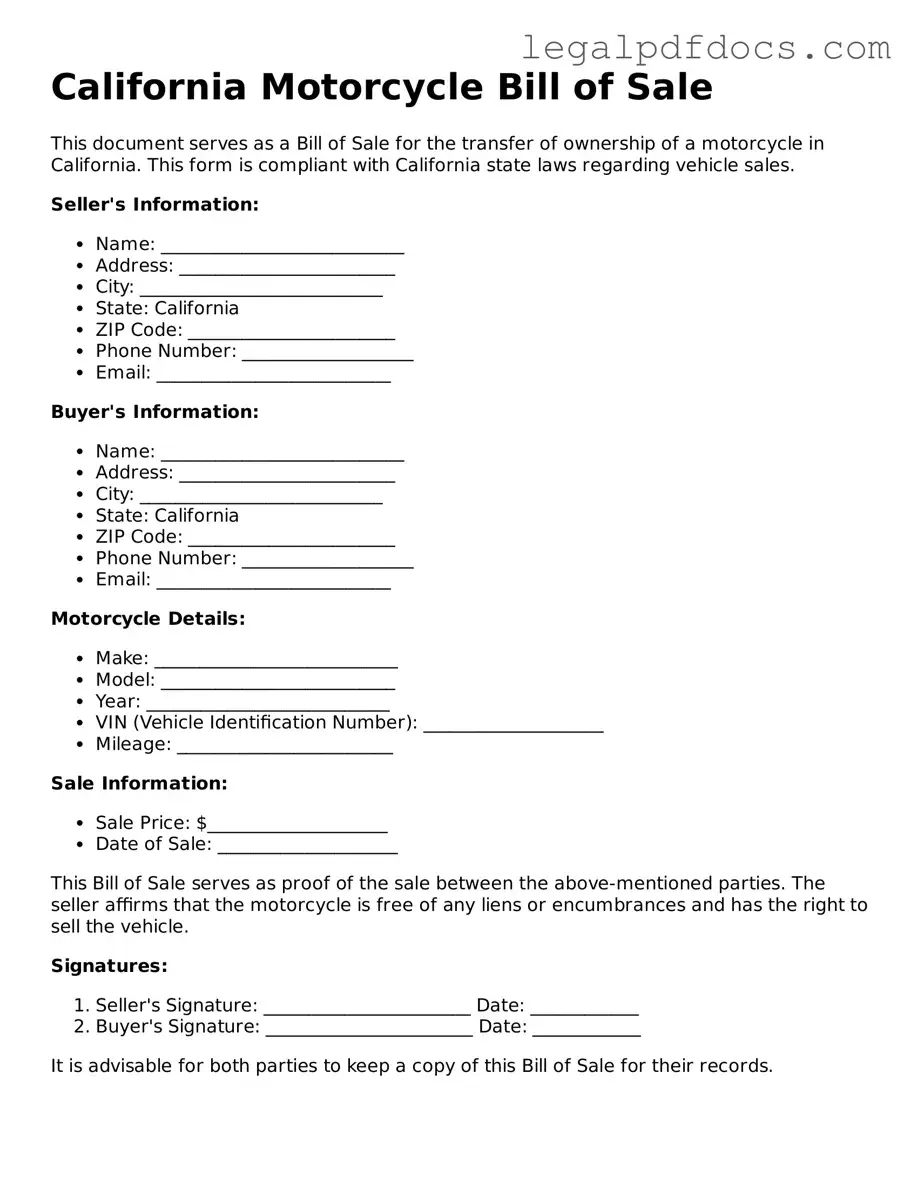Official Motorcycle Bill of Sale Form for California
The California Motorcycle Bill of Sale form serves as a legal document that records the transfer of ownership of a motorcycle between a seller and a buyer. This form includes essential details such as the motorcycle's make, model, year, and Vehicle Identification Number (VIN), along with the names and signatures of both parties involved in the transaction. Properly completing this form is crucial for ensuring a smooth transfer of ownership and avoiding potential disputes.
Ready to fill out the form? Click the button below to get started.
Open Motorcycle Bill of Sale Editor Here
